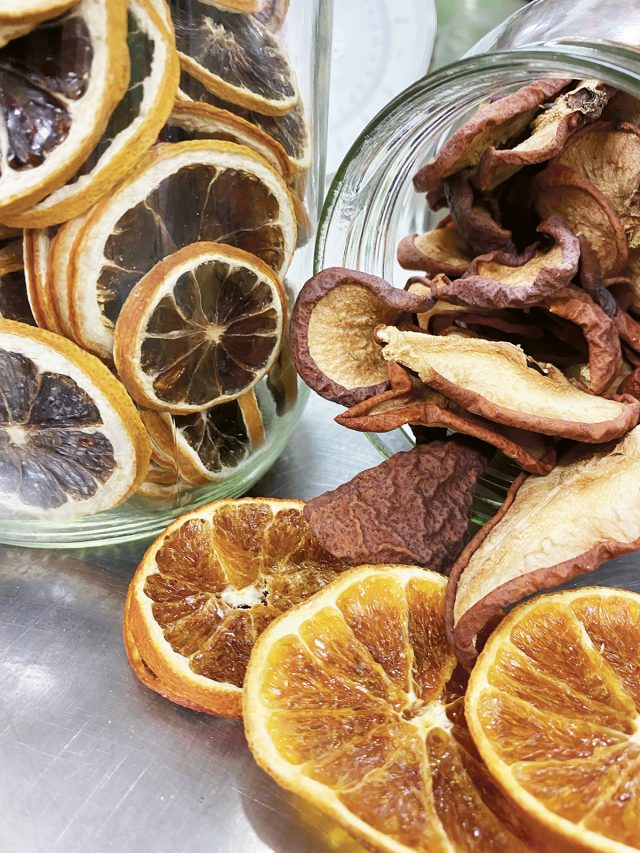A great way to preserve fruit and vegetables is to dry them.
Dehydrating is simple to do, but does take time, although, fortunately, not much hands-on time. Dried produce is versatile — use dried citrus wheels as drink garnishes or added to iced water (the amount of flavour imparted by citrus wheels is surprising).
To use in cooking and salads, rehydrate by soaking water. This time of year the hot dry weather is perfect for sun-drying produce. The key is to slice produce thinly and allow adequate air flow, drying faster and more evenly. A sharp knife or a mandolin helps with this task.
To dry the slices, they can be laid out on paper or a wire rack and protected from flying insects and ants with a fly net. This may take a few days, so bring in at night. A dehydrator can be used to dry produce or even the oven at a low temperature. Be prepared for bigger pieces to take 12 hours or more to dry in a dehydrator. The time it takes is dependent on thickness, air flow, moisture content and the temperature. Store in an airtight jar in the cupboard, saving precious fridge and freezer space.
Apples, pears, citrus, mangoes and bananas are all great simply sliced and dried, grapes can be left whole. Dipping fruit in lemon juice can help prevent browning, particularly when sun drying.
Figs and stone fruit can be dried after slicing, however they are improved if you boil them first and leave them whole or in halves. The bonus is that you get two products instead of one – syrup or vinegar as well as the dried fruit.
Figs: For 1 kg figs, use 2 cups sugar, 1 cup water and 1/3 cup vinegar and boil for 3 hours, before dehydrating.
Stone fruit, particularly apricots can simply be brought to the boil in apple cider vinegar, drained and then dehydrated. Remove the stone first. The resulting vinegar can be used in dressings and cooking or sweetened and used in cocktails or just with soda water.
Fruit can also be pureed and spread thinly on baking paper to make your own rollups.
Dehydrating vegetables and vegetable ends is great way to make your own vegetable stock powder, try carrots, pumpkin, tomatoes, capsicum, beetroot, chilli, onions, garlic and herbs of choice (these dry much faster).
Put the dried ingredients into blender/food processor with a good lot of salt and turn into a coarse powder. Use this in place of stock powder. You can even dry thin slices of beef to make beef stock powder.
There is a whole other piece to be written about making jerky, maybe next month.








